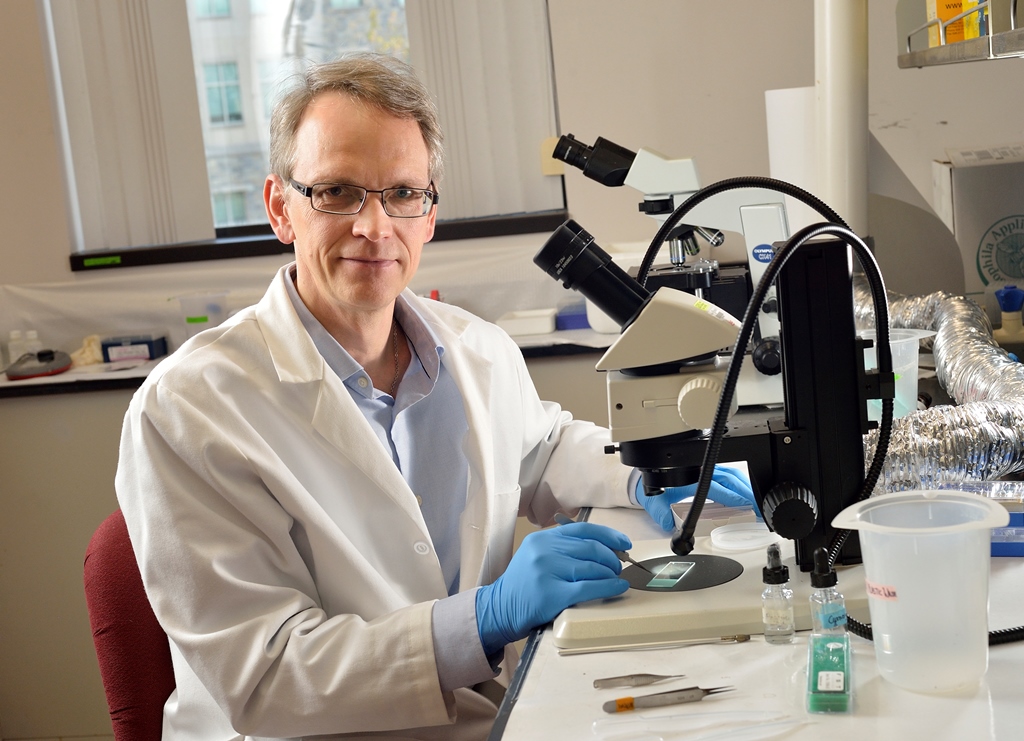TSU Biological Institute is investigating the mechanism of chromosomal variability in malaria mosquitoes, the blood-sucking insects that transmit dangerous infections to humans. Biologists will do a complete sequencing of the genomes of two species, Anopheles messeae and Anopheles beklemishevi, both widespread in Russia. This will give maximum information about the adaptive capabilities of mosquitoes, for example, their ability to tolerate cold or drought and, transmit certain diseases. When there is a danger of an epidemic spread by malaria mosquitoes, genetic information will help create a quick response with insecticides that target this species.
- Anopheles mosquitoes are one of the most dangerous animals in the world. They are capable of carrying many lethal infections, including malaria, West Nile fever, Mayaro fever, lymphatic filariasis, dirofilariasis, and others, - says Igor Sharakhov, project manager, professor at the TSU Biological Institute and Virginia Polytechnic Institute and State University. - Malaria has long been eradicated in Russia, but malaria mosquitoes have not disappeared anywhere. Moreover, due to climate change, they are actively expanding their range, moving north and east. Taking into account the fact that people are now actively moving around the planet, visiting exotic countries, the risk of importing deadly infections and the development of new epidemics both increase significantly. To prevent this, we need to know the genetic makeup of the malaria mosquitoes that live near us.
TSU biologists will investigate two species of malaria mosquitoes widespread in the Russian Federation and the Tomsk Region, Anopheles messeae and Anopheles beklemishevi. Scientists will compare their genomes with the genome of the related Anopheles freeborni mosquito, which lives in the United States. The spread of malaria mosquitoes to Eurasia was from North America, so the comparison of Siberian mosquitoes with a more ancestral species will reveal the chromosomal changes that have occurred.
- This is important because chromosomal mutations can provide the carrier with new properties, - explains Igor Sharakhov. - There is an example from Africa, where, in the study of Anopheles gambiae, it was found that one fairly common inversion (a type of mutation in which a section of the chromosome turns 180 degrees) was directly related to the ability of mosquitoes to survive in drought conditions. This helps the species to significantly expand its range, go beyond the tropical forests and inhabit the savannah.
According to the scientist, many adaptive features of organisms are encoded in their genomes. Having read the complete genome of malaria mosquitoes, biologists will be able to fully assess the potential of the species, including their ability to adapt to adverse factors - drought, cold, heat, and others.

At the genetic level, it will be possible to study the ability of female Siberian mosquitoes to enter diapause and survive severe winters. Deciphering the genome will also tell us about the food preferences of mosquitoes: whose blood the insect will drink - birds', people's, warm-blooded animals', or that it is omnivorous. This will determine the range of sources from which the mosquito can become infected, and the potential victims to whom it will transmit the pathogen. Along with this, researchers will be able to analyze the genes responsible for the transmission of diseases and draw conclusions about which infections each species may carry.
One of the tasks will be the construction of genome maps for three mosquito species. Along with this, the researchers intend to find out the mechanisms of chromosomal changes and find out what their diversity is within the species. Genomic analysis will test the hypothesis that the cause of chromosomal mutations may be "junk" DNA or so-called "jumping" elements with the ability to move from one part of a chromosome to another, leading to its rupture and rearrangement.
- The main task of our project is to study the effect of inversion on the work of genes,- says Igor Sharakhov. - Gene expression profiles will be measured in mosquitoes with and without inversion. In the process of expression, hereditary information is converted into RNA and then into protein, therefore the level of RNA is important from the point of view of the functional capabilities of the organism.
The project uses modern technologies and tools to extract a large amount of new data, for example, the technology of long reads of DNA sequences. Fluorescence in situ hybridization (FISH) will be used to map DNA sequences on chromosomes. This molecular cytogenetics method identifies a specific chromosome or part of a chromosome where a gene is located. These approaches determine changes in chromosomes that cannot be detected by conventional cytogenetic methods.
The data that scientists will receive will have not only great fundamental but also practical significance. First, understanding the adaptive capabilities of a species enables predicting its range under certain ecological parameters. This, in turn, will help to calculate the risks of the spread of diseases transmitted by malaria mosquitoes.
Second, in the event of a pandemic threat caused by malaria mosquitoes, the genomic data will help to determine targets for population reduction or destruction with a preliminary calculation of environmental risks.






